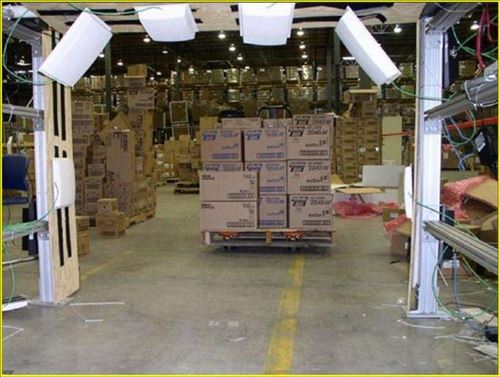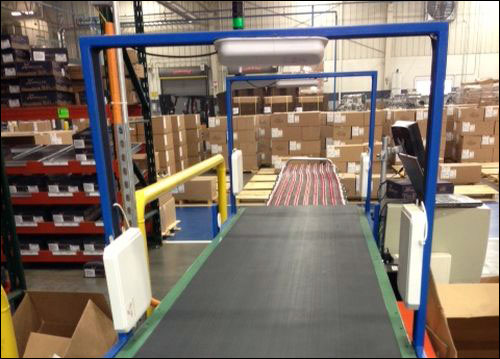RFID warehouse logistics management system is a based on RFID recognition technology to identify for goods tracking, management and check goods information platform, the system will be advanced RFID technology and the computer database management query, the combination of automatic identification of goods information, to realize the automation and informatization of enterprise logistics operation, intelligent requirements.
Radio frequency identification (RFID), also known as RFID or RFID, is a communication technology that can identify a specific target by radio signals and read and write relevant data without establishing mechanical or optical contact between the identification system and the specific target.
Technical background
Nowadays, the management of supply chain is developing rapidly, and the efficient operation mechanism of warehouse management system has been paid much attention to in micro logistics.Generally speaking, in the information age, every enterprise with logistics links will have its own warehouse management system.
RFID data reading and writing functions, as well as penetration, reusability and environmental independence, can fully meet the requirements of warehouse management, from the maximum extent to improve the operational efficiency of warehouse management process.

The performance characteristics of
1) relying on the advantages of RFID technology, the system can collect goods information remotely;
2) the system USES RFID to collect real-time information for each operation link to ensure the enterprise to grasp the inventory status timely and accurately;
3) the system can realize the management of anti-crosstalk goods by collecting the goods data through the warehouse reader;
4) the system software platform adopts an open platform architecture, which can be well connected with enterprise ERP, SAP and WMS systems.
Applicable fields
With the gradual maturity of RFID technology, its application is more and more extensive.RFID front-end equipment (tags, card readers) combined with the core enterprise system can be widely applied in the field of supply chain and warehouse logistics management, effectively solving the supply chain operation data input/output, business process control and tracking, and reduce the error rate and other problems.

1) retail
RFID can improve the inventory management of retailers, achieve timely replenishment, effectively track transportation and inventory, improve efficiency, reduce errors.Stores can also use RFID systems to automate scanning and billing at checkout counters, replacing manual collections.
2) storage link
In the warehouse, the most extensive use of rf technology is to access goods and inventory, it can be used to achieve automated inventory and pick up operations.In the warehouse management, supply chain planning system of the receiving plan, pickup plan and shipping plan combined with rfid technology, able to efficiently complete the various business operation, improve the service quality and reduce the cost, save labor and inventory space, and at the same time reduce the false place, due to the goods during the whole logistics to send the wrong, theft, damage, and inventory and delivery errors caused by the wear and tear.
3) transportation
In transport management, RFID tags are attached to goods and vehicles transported in transit, and RFID receiving and forwarding devices are installed at some checkpoints along the route.After receiving the RFID tag information, the receiving device will upload it together with the location information of the receiving place to the communication satellite, which will then transmit it to the transportation dispatching center and send it to the database.
4) distribution/distribution
In the distribution link, the adoption of rfid technology can greatly accelerate the delivery speed and improve the efficiency and accuracy of the selection and distribution process, reduce labor, reduce the cost of distribution, and ensure accurate inventory control.
5) production process
The application of RFID technology in the manufacturing process can complete the automatic production line operation, realize the identification and tracking of raw materials, parts, semi-finished products and finished products on the whole production line, reduce the cost and error rate of manual identification, and improve the efficiency and benefit.

The system performance
Labor can be reduced by 20-30%;
99% of warehouse products are visualized to reduce the risk of missing products;
Improved supply chain management will reduce service hours by 20-25%;
Improve the accuracy and reliability of storage information;
Efficient and accurate data collection to provide operational efficiency;
Automatic collection of incoming and outgoing data to reduce human error;
Reduce the cost of warehousing and logistics;
 Sendtime 2020-01-19
Sendtime 2020-01-19 BY
BY  Read 947
Read 947


 Relate recommen
Relate recommen



